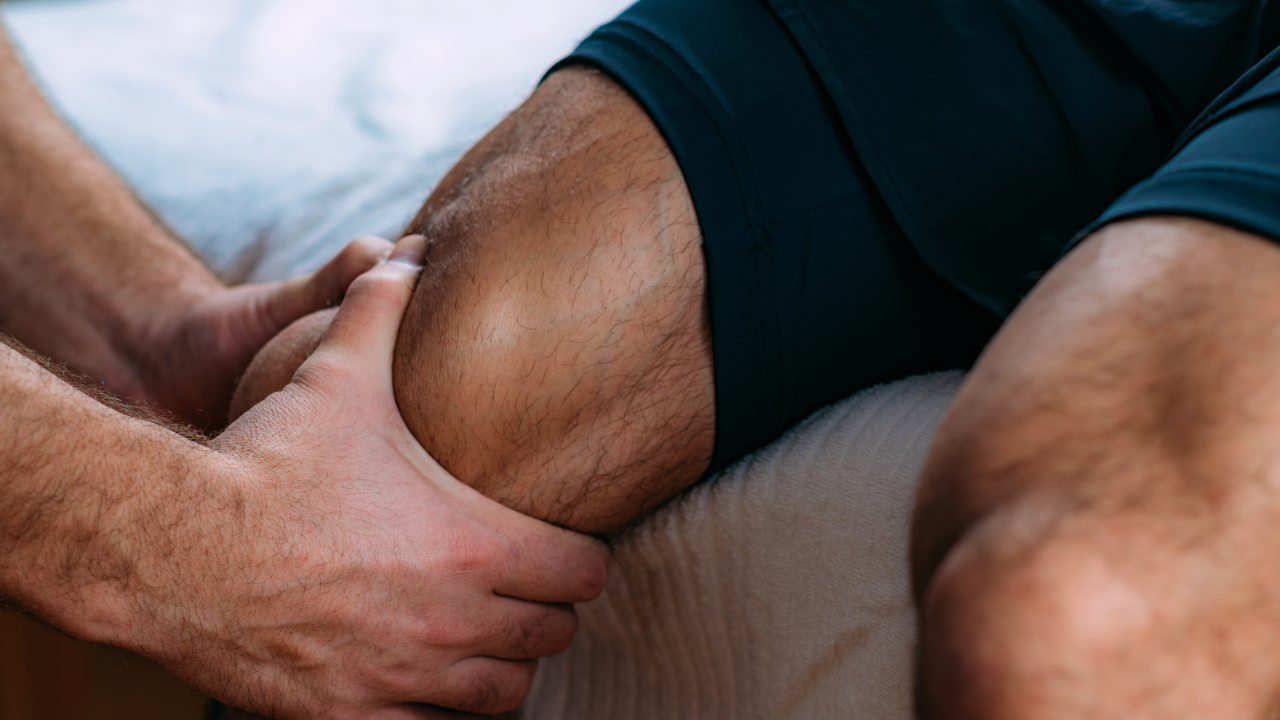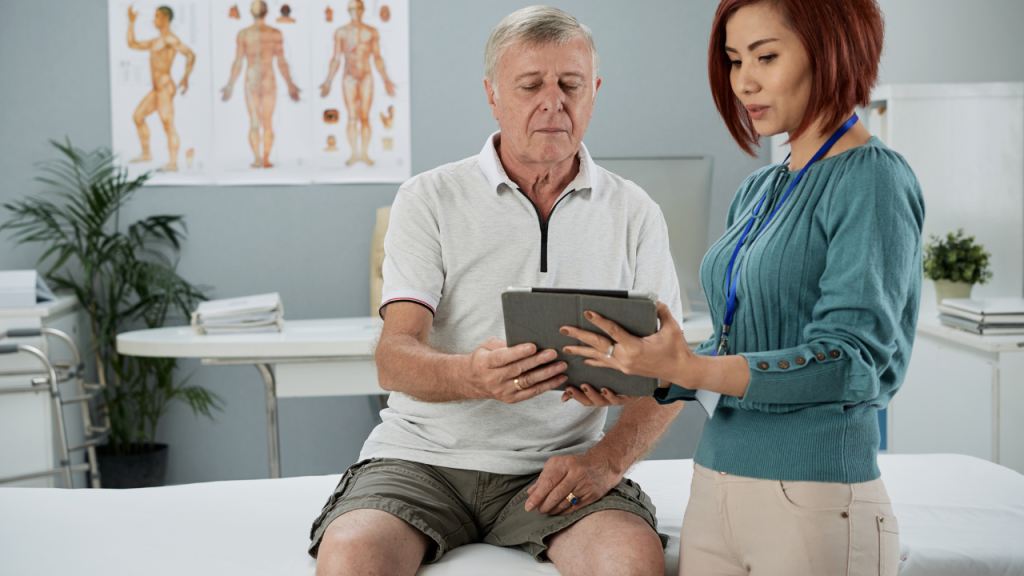
Knee osteoarthritis (OA) can be a debilitating condition, causing pain, stiffness, and limited mobility in the knee joint. This chronic condition affects millions of people worldwide, especially older adults, and can interfere with everyday activities such as walking, climbing stairs, or even sitting comfortably. For many, the thought of surgery or long-term medication might seem like the only solution. However, there’s an often-overlooked alternative: physical therapy.
Physical therapy (PT) offers a non-invasive, drug-free approach to managing knee osteoarthritis, helping patients reduce pain, improve mobility, and enhance their overall quality of life. In this article, we’ll explore the benefits of physical therapy for knee OA and why it should be an integral part of your treatment plan.
Understanding Knee Osteoarthritis
Before diving into the specific benefits of physical therapy, it’s important to understand what knee osteoarthritis is and how it impacts the body. Osteoarthritis is a degenerative joint disease that occurs when the cartilage protecting the ends of your bones in the joint deteriorates over time. In the knee, this can lead to pain, swelling, and stiffness, making it increasingly difficult to move the joint freely.
The risk factors for knee OA include age, obesity, previous knee injuries, and genetics. While it’s a common condition among older adults, it can affect people of all ages. Symptoms often worsen over time, leading many to seek relief through medications or even surgical interventions such as knee replacement.
However, knee osteoarthritis doesn’t have to define your life. With the right approach, particularly physical therapy, patients can manage the symptoms effectively and lead an active, pain-free life.
The Role of Physical Therapy in Knee Osteoarthritis
Physical therapy plays a critical role in managing knee OA by targeting the root causes of pain and dysfunction. Rather than masking symptoms with medication, PT focuses on improving the function of the joint, strengthening the surrounding muscles, and correcting movement patterns. The goal is to restore as much function as possible and help you continue performing daily activities with ease.
Strengthening the Muscles Around the Knee
One of the most important aspects of physical therapy for knee osteoarthritis is strengthening the muscles around the knee joint. When the muscles surrounding the knee, such as the quadriceps, hamstrings, and calf muscles, are weak, the joint becomes less stable and more prone to pain. Strengthening these muscles helps provide better support to the knee, reducing the strain on the joint itself.
A well-structured physical therapy program will include targeted exercises to improve the strength of these muscles. Stronger muscles help absorb some of the impact and stress that would otherwise be placed on the joint, thus alleviating pain and improving function.
Improving Joint Mobility and Flexibility
Knee OA often leads to stiffness and reduced range of motion, making it difficult to bend or straighten the knee. Physical therapists utilize various techniques to improve joint mobility, helping to restore full movement in the knee joint.
Through a combination of stretching, manual therapy, and joint mobilization techniques, PT helps to improve flexibility and restore normal movement patterns. This not only eases pain but also helps prevent further damage to the joint by ensuring that it moves as it should. Increased mobility can also prevent compensatory movement patterns that could lead to secondary issues in other parts of the body, such as the hips or lower back.
Pain Reduction and Inflammation Control
Physical therapy techniques can also help reduce the pain and inflammation associated with knee OA. Therapists often use modalities such as heat, cold, electrical stimulation, and ultrasound therapy to reduce swelling and alleviate discomfort in the affected joint.
In addition to these modalities, manual therapy techniques, like massage and joint manipulation, can help reduce pain by improving blood flow to the area and relaxing tense muscles. Pain management is essential not just for immediate relief, but also for long-term improvement, as it allows patients to engage in exercises and activities that further enhance the knee’s strength and mobility.
Educating Patients on Proper Body Mechanics
Physical therapy also provides valuable education on body mechanics and posture. Many people with knee osteoarthritis develop abnormal movement patterns to avoid pain, which can contribute to further joint damage or create imbalances in other areas of the body. Physical therapists teach patients how to move properly, ensuring that their daily activities don’t put unnecessary stress on the knee joint.
Additionally, therapists can offer guidance on footwear and assistive devices, such as knee braces or orthotics, to further reduce the strain on the knee. This type of education helps patients maintain healthy movement patterns, which can slow the progression of OA and reduce the risk of future injuries.

Improving Balance and Stability
Knee osteoarthritis can also affect a person’s balance and stability, which increases the risk of falls and injuries. As the condition progresses, individuals may experience a loss of confidence in their ability to move safely. Physical therapy addresses this issue by incorporating balance training into the treatment plan.
By improving proprioception (the body’s sense of where it is in space) and incorporating balance exercises, physical therapy helps patients regain their confidence and stability. This is especially important for older adults who may already be at a higher risk of falls due to other factors, such as osteoporosis or muscle weakness.
Avoiding Surgery
In some cases, knee replacement surgery may be the recommended treatment for advanced knee osteoarthritis. However, not all patients require surgery, and many can experience significant relief through physical therapy alone. For those with mild to moderate OA, physical therapy is often the first line of treatment and can help delay or even avoid the need for surgery.
By addressing the underlying causes of pain and dysfunction, physical therapy can help people manage their symptoms long-term and reduce the need for more invasive procedures. In fact, many patients who undergo physical therapy report improved outcomes and a better quality of life, even without surgery.
Suggested Reading: Osteoarthritis: Physical Therapy vs. Medication for Pain Relief
Thrive Physical Therapy: A Path to Healing
At Thrive Physical Therapy, the goal is to help you take control of your knee osteoarthritis and live a life that’s not defined by pain or limited mobility. With a team of expert therapists dedicated to understanding your unique needs, Thrive provides personalized treatment plans designed to improve your knee function, reduce pain, and enhance your overall well-being.
Whether you’re looking to strengthen the muscles around your knee, improve your flexibility, or learn how to move more efficiently, Thrive Physical Therapy offers a range of services to meet your needs. The therapists at Thrive take a holistic approach, combining cutting-edge techniques with compassionate care to help you reach your goals.
Thrive’s focus on education ensures that you not only receive treatment but also gain the knowledge you need to continue improving long after your sessions end. By teaching you how to care for your body and move correctly, Thrive empowers you to take control of your knee health and live the active life you deserve.
If you’re dealing with knee osteoarthritis and are looking for a solution that’s tailored to your needs, Thrive Physical Therapy is here to help. With their expert care and personalized approach, you can experience the relief you’ve been searching for and get back to doing the things you love.
To learn more about how Thrive Physical Therapy can assist you with knee osteoarthritis, visit https://thriveptclinic.com/.

